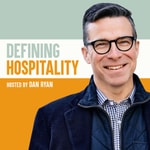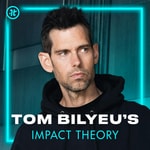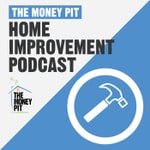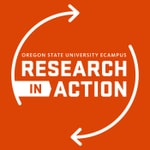Field, Lab, Earth – Details, episodes & analysis
Podcast details
Technical and general information from the podcast's RSS feed.
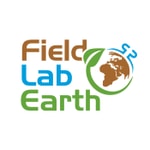
Field, Lab, Earth
ASA, CSSA, SSSA
Frequency: 1 episode/20d. Total Eps: 131

Recent rankings
Latest chart positions across Apple Podcasts and Spotify rankings.
Apple Podcasts
🇫🇷 France - naturalSciences
29/07/2025#44🇫🇷 France - naturalSciences
28/07/2025#38🇫🇷 France - naturalSciences
27/07/2025#30🇫🇷 France - naturalSciences
26/07/2025#28🇫🇷 France - naturalSciences
25/07/2025#20🇫🇷 France - naturalSciences
24/07/2025#18🇫🇷 France - naturalSciences
23/07/2025#12🇫🇷 France - naturalSciences
22/07/2025#7🇺🇸 USA - naturalSciences
17/06/2025#90🇨🇦 Canada - naturalSciences
02/06/2025#81
Spotify
No recent rankings available
Shared links between episodes and podcasts
Links found in episode descriptions and other podcasts that share them.
See all- https://www.ducks.org/
752 shares
- https://www.nasa.gov/
401 shares
- https://fieldlabearth.libsyn.com/
156 shares
- https://twitter.com/home
1554 shares
- https://twitter.com/Planthropology_
38 shares
- https://twitter.com/ThePlantProf
6 shares
RSS feed quality and score
Technical evaluation of the podcast's RSS feed quality and structure.
See allScore global : 63%
Publication history
Monthly episode publishing history over the past years.
Flyway Flooding Impacts with Dr. Amitava Chatterjee
Episode 118
vendredi 16 août 2024 • Duration 39:45
“Shallow water habitat management influences soil CO2 efflux from agricultural fields in the Lower Mississippi River Basin (LMRB), USA” with Amitava Chatterjee.
The Lower Mississippi River Basin (LMRB) serves as a critical stopover habitat for migratory birds traveling between Canada and Central and South America, presenting both challenges and opportunities for habitat conservation. To support these birds, farmers in the region flood agricultural fields in the winter, creating temporary wetlands that provide habitat and essential food sources. This practice has increased bird stopovers but raises concerns about soil health, as flooding can alter soil properties. In this episode, Dr. Amitava Chatterjee shares his insights on research related to the effects of flooding on soil properties in agricultural lands in the LMRB and how it contributes to maintaining sustainable stopover habitats for migratory birds.
Tune in to learn:
· What migratory bird stopovers are
· How flooding of agricultural lands helps migratory birds
· How flooding of agricultural land affects soil health
· How flooding affects soil microbial activity
· What are the long-term impacts of agricultural land flooding
If you would like more information about this topic, this episode’s paper is available here: https://doi.org/10.1002/agg2.20365
This paper is always freely available.
Contact us at [email protected] or on Twitter @FieldLabEarth if you have comments, questions, or suggestions for show topics, and if you want more content like this don’t forget to subscribe. If you’d like to see old episodes or sign up for our newsletter, you can do so here: https://fieldlabearth.libsyn.com/.
If you would like to reach out to Amitava Chatterjee, you can find him here: [email protected]
https://www.ars.usda.gov/midwest-area/ames/nlae/people/amitava-chatterjee/
If you would like to reach out to Sourajit Dey from our Student Spotlight, you can find him here: [email protected]
https://www.linkedin.com/in/sourajit-dey-100208215
Resources
“Flooding Fields May Be a Win-Win For Farmers and Birds in the Mississippi Delta” article: https://tellus.ars.usda.gov/stories/articles/flooding-fields-may-be-win-win-farmers-and-birds-mississippi-delta
“Flooding Fields in the Mississippi Delta Helps Crop Yields—and Shorebirds” article: https://www.allaboutbirds.org/news/flooding-fields-in-the-mississippi-delta-helps-crop-yields-and-shorebirds/#
“Soil carbon mineralization, enzyme activities, and crop residue decomposition under varying soil moisture regime” article in Soil Science Society of America Journal: https://doi.org/10.1002/saj2.20601
https://directives.sc.egov.usda.gov/18529.wba
Conservation Incentive Program: Winter-Flooded Rice Fields for Waterfowl Habitat: https://youtu.be/yzOFy0weIx0?si=QoTRQHwHdwF5ZGo9
MDWFP Waterfowl Program - Mississippi Land Conservation Assistance Network: https://www.mississippilandcan.org/local-resources/MDWFP-Waterfowl-Program/20187
https://www.mdwfp.com/wildlife-hunting/waterfowl-program.aspx
https://www.ars.usda.gov/midwest-area/ames/nlae/
Thank you to Om Prakash Ghimire for help with the shownotes and other assets.
Field, Lab, Earth is Copyrighted by the American Society of Agronomy, Crop Science Society of America, and Soil Science Society of America.
Leaf Mold Compost for Urban Agriculture with Kyle Richardville
Episode 117
vendredi 19 juillet 2024 • Duration 35:56
“Leaf mold compost for better soil and crop health” with Kyle Richardville
Growing vegetables in urban gardens is becoming a popular and ever more important option for supporting families with nutritious and healthy produce. However, the use of chemical fertilizers and pesticides can cause negative impacts on soil, crop, and human health. To reduce these negative impacts, there is a growing interest in using biologicals and compost manure for crop production. This episode, Kyle Richardville, agronomist and regenerative agriculture consultant at “Understanding Ag,” shares his insights on the importance of a compost made from tree leaves and fungi—leaf mold compost—and how it impacts soil microbial communities, soil physical properties, and overall crop production.
Tune in to learn:
· What are biologicals and compost manure?
· What is Trichoderma and how does it help in agriculture?
· How do mycorrhizal fungi benefit plants?
· How does compost manure increase soil and crop health?
If you would like more information about this topic, this episode’s paper is available here: https://doi.org/10.1002/uar2.20022
This paper is always freely available.
Contact us at [email protected] or on Twitter @FieldLabEarth if you have comments, questions, or suggestions for show topics, and if you want more content like this don’t forget to subscribe. If you’d like to see old episodes or sign up for our newsletter, you can do so here: https://fieldlabearth.libsyn.com/.
If you would like to reach out to Kyle Richardville, you can find him here [email protected]
https://understandingag.com/team/kyle-richardville/
If you would like to reach out to Udit Debangshi, you can find him here:
[email protected]
LinkedIn: https://www.linkedin.com/in/udit-debangshi-703623207
Resources
Transcripts: https://www.rev.com/transcript-editor/shared/RfBbxJY4TGtLQKntBYbFAfBJAuFXs_XrgSeIu8t9UABk0ZbgCJGEYhPW16TvZ2Dfgod-jzt8ERNAsjPO9zHV5vJeRck?loadFrom=SharedLink
Understanding Ag: https://understandingag.com/
Additional Resources from Kyle’s Blog: https://groundedregenerativeblog.com/additional-resources/
Teaming with Fungi book: https://www.amazon.com/Teaming-Fungi-Organic-Mycorrhizae-Gardeners/dp/1604697296
Thank you to our volunteer Om Prakash Ghimire for help with the shownotes and other assets.
Field, Lab, Earth is Copyrighted by the American Society of Agronomy, Crop Science Society of America, and Soil Science Society of America.
Mitigating Coastal Eutrophication with Drs. Wafa Malik and Patrick Durand
Episode 108
vendredi 19 janvier 2024 • Duration 41:39
“Nitrogen mitigation scenarios to reduce coastal eutrophication” with Wafa and Patrick.
Eutrophication is a state of overgrowth of aquatic plants, such as algae and seaweeds, in water bodies due to the excessive pouring of nutrients from different sources like agriculture, industry, and human settlements, causing disturbances to the ecosystems. Coastal eutrophication is a major issue worldwide due to the increasing discharge of nutrient emissions from agricultural activities into coastal ecosystems. Several efforts have been made to reduce eutrophication, achieving up to 35–40% reduction, but these measures are not sufficient to eliminate the problem. For more sustainable and effective solutions, the root causes of the nutrient emissions, especially nitrogen, need to be addressed in current agricultural practices. In this episode, Drs. Wafa Malik and Patrick Durand share their research on the reduction of coastal eutrophication in Brittany, France, focusing on changing cropping systems and reducing the sources through modeling the effectiveness of different approaches and taking into consideration the interests of farmers and the local community.
Tune in to learn more about
· How eutrophication happens
· What are the causes and consequences of coastal eutrophication
· What are the agricultural impacts of eutrophication
· How we can change cropping systems to reduce eutrophication
· What mitigation challenges exist in reducing coastal eutrophication
If you would like more information about this topic, this episode’s paper is available here:
https://doi.org/10.1002/agg2.20319
This paper is always freely available.
Contact us at [email protected] or on Twitter @FieldLabEarth if you have comments, questions, or suggestions for show topics, and if you want more content like this don’t forget to subscribe. If you’d like to see old episodes or sign up for our newsletter, you can do so here: https://fieldlabearth.libsyn.com/.
If you would like to reach out to Wafa Malik, you can find her here:
[email protected]
LinkedIn: https://www.linkedin.com/in/wafa-malik-research/
ResearchGate: https://www.researchgate.net/profile/Malik-Wafa
If you would like to reach out to Patrick, you can find him here:
[email protected]
https://eng-umrsas.rennes.hub.inrae.fr/directory/DURAND-Patrick
Resources
National Research Institute for Agriculture, Food and the Environment (INRAE), France
https://eng-umrsas.rennes.hub.inrae.fr/
Thank you to our volunteer, Om Prakash Ghimire, for his assistance on show notes and other materials.
Field, Lab, Earth is Copyrighted by the American Society of Agronomy, Crop Science Society of America, and Soil Science Society of America.
High-Throughput Seed Phenotyping with James Clohessy
Episode 18
vendredi 21 juin 2019 • Duration 35:01
“A Low-Cost Automated System for High-Throughput Phenotyping of Single Oat Seeds” with James Clohessy.
A Rube Goldberg machine is a machine intentionally designed to complete a simple task using overly complicated steps. James Clohessy and his team are doing just the opposite. Using machine learning, web cameras, open software, and photogrammetry techniques, they’re developing low cost, high-throughput, high efficiency phenotyping systems. With these systems, researchers can save hours of time that would normally be spent on taking individual seed measurements by hand, such as height, width, and color, all while gaining greater detail about the seed such as volume and density.
Listen in to learn more about James’ new system as well as:
- What are phenotyping and photogrammetry?
- What are some of the applications of knowing seed size, color, and weight?
- What are some of the limitations of high-throughput phenotyping?
- What are some of the future applications of these machine learning systems?
If you would like more information about this topic, this episode’s paper is available here: https://doi.org/10.2135/tppj2018.07.0005
This paper is always freely available.
If you would like to find transcripts for this episode or sign up for our newsletter, please visit our website: http://fieldlabearth.libsyn.com/
Contact us at [email protected] or on Twitter @FieldLabEarth if you have comments, questions, or suggestions for show topics, and if you want more content like this don’t forget to subscribe.
If you would like to reach out to James, you can find him here:
[email protected]
https://www.linkedin.com/in/jameswclohessy/
@ufifasnfrec
Resources
CEU Quiz: http://www.agronomy.org/education/classroom/classes/814
Cornell Plant Breeding and Genetics Section: https://plbrgen.cals.cornell.edu/
Paul Armstrong: https://www.ars.usda.gov/plains-area/mhk/cgahr/spieru/people/paul-armstrong/
Dr. Guo’s Easy PPC program: http://park.itc.u-tokyo.ac.jp/Field-Phenomics/ninolab/PhenotypingTools/EasyPCC.html
HeatSync Labs: https://www.heatsynclabs.org/
Field, Lab, Earth is copyrighted to the American Society of Agronomy, Crop Science Society of America, and Soil Science Society of America.
Vadose Zone Gas Migration and Leaking Wells with Olenka Forde
Episode 17
vendredi 17 mai 2019 • Duration 31:15
“Vadose Zone Gas Migration and Surface Effluxes after a Controlled Natural Gas Release into an Unconfined Shallow Aquifer” with Olenka Forde.
Olenka Forde thinks a lot about a world that we’ll never see – the world existing right underneath our feet. Olenka’s research is related to hydraulic fracturing and she is interested in how we can safely extract oil and gas resources without negative impacts on fresh water supply, wildlife, and even humans. She does this by monitoring the fate and transport of gases in the subsurface and emissions at the ground surface at a controlled natural gas release experiment, essentially simulating what happens when a gas well leaks.
Gas leakage at oil and gas wells is an old problem, but has garnered renewed interest with the advent of hydraulic fracturing. Hydraulic fracturing is a process that works to free valuable natural gas from beneath rock deep in the earth through injecting a mixture of water, sand, and chemicals at a very high pressure. The gas is released through these cracks and up through a constructed well to the surface for collection. Occasionally; however, sealing of wells is imperfect and gas present along the borehole escapes, causing the potential for groundwater contamination and surface emissions. Olenka works to map the pathway of gases after the point of release, eventually with the goal of creating improved action plans for industry professionals to keep people and the environment safe. Tune in to learn about her research and find answers to questions such as:
- What’s the difference between an unconventional and conventional gas well?
- What makes a well leak?
- What are the risks associated with gas leakage?
- What happens to gas after it enters an aquifer?
- Why can it be challenging to find gas leakage?
- What’s a flux chamber?
If you would like more information about this topic, this episode’s paper is available here: https://doi.org/10.2136/vzj2018.02.0033
This paper is always freely available.
If you would like to find transcripts for this episode or sign up for our newsletter, please visit our website: https://fieldlabearth.libsyn.com/
Contact us at [email protected] or on Twitter @FieldLabEarth if you have comments, questions, or suggestions for show topics, and if you want more content like this don’t forget to subscribe.
If you would like to reach out to Olenka, you can find her here:
[email protected]
Resources
CEU Quiz: http://www.soils.org/education/classroom/classes/833
Cahill, 2017: https://www.nature.com/articles/ngeo2919
Cahill, 2018: https://www.sciencedirect.com/science/article/pii/S004896971733468X
Steelman, 2017: https://www.sciencedirect.com/science/article/pii/S0169772217300360?via%3Dihub
Vidic, 2013: https://science.sciencemag.org/content/340/6134/1235009
Alvarez, 2018: https://science.sciencemag.org/content/361/6398/186
Soeder, 2018: http://www.geosociety.org/gsatoday/science/G361A/article.htm
Field, Lab, Earth is copyrighted to the American Society of Agronomy, Crop Science Society of America, and Soil Science Society of America.
Turfgrass Colorants with Drew Pinnix
Episode 16
vendredi 19 avril 2019 • Duration 37:01
“Color, Transfer, and Application Parameters of Turfgrass Colorants” with Garland (Drew) Pinnix.
In kindergarten, we’re taught that colors can be one of seven colors of the rainbow. Later, we learn fun colors like purple mountain majesty and get excited when our friend brings a 50-pack of crayons. In reality though, color is much more complex, a mixture of hue, brightness, and saturation. Drew Pinnix thinks a lot about color, specifically in relation to turfgrass. Most of the time, the beautiful turfgrass we see at golf courses or football fields is due to careful management by professionals trained in plant science or agronomy. However, sometimes weather or cost restrictions gets in the way, and turfgrass managers look to colorants to get the turfgrass ready for use and for cameras quickly.
However, getting a natural color that won’t rub off as football players slide in after a fumble is incredibly complicated. That’s where Drew’s team comes in. He works to scientifically evaluate turfgrass colorants so football fields and golf courses can keep looking gorgeous year-round. Tune in to learn more about Drew’s experimental design, turfgrass management, and learn answers to the following:
- What are some reasons that turfgrass managers might use colorants?
- What is overseeding, and why might it be done intentionally?
- What is hue angle?
- What is the difference between hue, saturation, and brightness?
- Does a colorant work better on wet or dry turf?
If you would like more information about this topic, this episode’s paper is available here: http://dx.doi.org/doi:10.2134/agronj2017.03.0164
It will be freely available from 19 April to 3 May, 2019.
If you would like to find transcripts for this episode or sign up for our newsletter, please visit our website: https://fieldlabearth.libsyn.com/
Contact us at [email protected] or on Twitter @FieldLabEarth if you have comments, questions, or suggestions for show topics, and if you want more content like this don’t forget to subscribe.
If you would like to reach out to Drew, you can find him here:
[email protected]
Resources
CEU Quiz: http://www.agronomy.org/education/classroom/classes/832
“Air Temperature Effects on Turfgrass Colorant Transfer” paper: dx.doi.org/doi:10.2134/cftm2017.12.0091
“Leaf Wetness Influences Turf Colorant Application” paper: dx.doi.org/10.2134/cftm2018.12.0099
TurfFiles: https://www.turffiles.ncsu.edu/
Field, Lab, Earth is copyrighted to the American Society of Agronomy, Crop Science Society of America, and Soil Science Society of America.
Hydrological Observatories with Dr. Heye Bogena
Episode 15
vendredi 15 mars 2019 • Duration 41:57
“Toward Better Understanding of Terrestrial Processes through Long-Term Hydrological Observatories” with Dr. Heye Bogena.
Hydrology, put plainly, is the study of water: how it moves, where it goes, and what’s inside it. Hydrologists gather as much information as they can about water in order to understand current water trends and to predict potential water patterns in the future. In a changing climate, this is more crucial than ever. Using data from multiple networks of hydrological observatories, hydrologists gather information and create and test models surrounding questions such as: How will land use change affect water flux? Will climate change create conditions for more low or high flow events? How can forestation affect frequency of high flow events? They then use this information to create resources for natural resource managers, officials, and the public to make informed decisions. In this episode, we’ll take a deeper look at how hydrological observatories are making strides in understanding water and its movement around the world.
We’ll discuss:
- What’s a catchment?
- What is the history of hydrological observatories?
- How do hydrological observatories communicate?
- Why should different disciplines of sciences collaborate with hydrology?
If you would like more information about this topic, this episode’s paper, the introductory paper to the Hydrological Observatories special section in Vadose Zone Journal, is available here: http://dx.doi.org/doi:10.2136/vzj2018.10.0194
This paper is always freely available.
If you would like to find transcripts for this episode or sign up for our newsletter, please visit our website: https://fieldlabearth.libsyn.com/
Contact us at [email protected] or on Twitter @FieldLabEarth if you have comments, questions, or suggestions for show topics, and if you want more content like this don’t forget to subscribe.
If you would like to reach out to Heye, you can find him here:
Email: [email protected]
Agrosphere Institute (IBG-3) web page: http://www.fz-juelich.de/ibg/ibg-3/EN/Home/home_node.html
http://www.fz-juelich.de/ibg/ibg-3/EN/Staff/B/Bogena%20Heye/Bogena%20Heye.html?nn=1239630
Resources
CEU Quiz: http://www.soils.org/education/classroom/classes/831
TERENO web page: www.tereno.net
Bi-annual TERENO newsletter (downloadable at the TERENO website and distributed via email).
European Network of Hydrological Observatories (ENOHA): https://www.enoha.eu/
German Drought Monitor: https://www.ufz.de/index.php?en=37937
AMMA-Catch paper from VZJ Special Section: https://doi.org/10.2136/vzj2018.03.0062
Bogena TERENO paper from VZJ Special Section: https://doi.org/10.2136/vzj2018.03.0055
Heinrich TERENO paper from VZJ Special Section: https://doi.org/10.2136/vzj2018.06.0116
Kiese TERENO paper from VZJ Special Section: https://doi.org/10.2136/vzj2018.03.0060
OZCAR paper from VZJ Special Section: https://doi.org/10.2136/vzj2018.04.0067
Field, Lab, Earth is copyrighted to the American Society of Agronomy, Crop Science Society of America, and Soil Science Society of America.
Precision and Sustainable Agriculture with Dr. David Clay
Episode 14
vendredi 15 février 2019 • Duration 42:13
Precision Agriculture Basics with Dr. David Clay
Dr. David Clay, along with the precision agriculture community, are working like codebreakers to crack the secret to more efficient, more environmentally friendly farming. The key? Understanding variability.
Across any given farm field, there are many discrepancies in how given points of the field react to similar management practices. If farmers understand what causes those discrepancies, they can fine tune management in ways that can optimize fertilizer and pesticide use, inputs, and time. Getting this type of information used to mean extensive and costly soil sampling. Dr. Clay discusses how tech has made it possible to make great management decisions from data obtained miles above a farm.
- Learn about this as well as:
- What are the types of variability found in a field?
- Why does topography affect yield?
- How does the Dust Bowl impact us and the land today?
- What is soil’s memory effect?
- What are zone sampling and grid sampling? Why is the difference important?
- How can one identify chlorophyll from miles away?
If you would like more information about this topic, Precision Agriculture Basics is available here: https://acsess.onlinelibrary.wiley.com/doi/book/10.2134/precisionagbasics
Front Matter: https://doi.org/10.2134/precisionagbasics.2018.frontmatter
The first chapter will be freely available from 15 February to 1 March, 2019.
If you would like to find transcripts for this episode or sign up for our newsletter, please visit our website: https://fieldlabearth.libsyn.com/
Contact us at [email protected] or on Twitter @FieldLabEarth if you have comments, questions, or suggestions for show topics, and if you want more content like this don’t forget to subscribe.
If you would like to reach out to David, you can find him here: [email protected] https://www.sdstate.edu/directory/david-clay
Resources
CEU Quiz: http://www.agronomy.org/education/classroom/classes/830
Precision Agriculture Basics: https://acsess.onlinelibrary.wiley.com/doi/book/10.2134/precisionagbasics
Practical Mathematics for Precision Farming: https://acsess.onlinelibrary.wiley.com/doi/book/10.2134/practicalmath
Precision Conservation: Geospatial Techniques for Agricultural and Natural Resources Conservation: https://acsess.onlinelibrary.wiley.com/doi/book/10.2134/agronmonogr59
“Knowledge, Skills, and Abilities in the Precision Agriculture Workforce: An Industry Survey,” published in Natural Sciences Education: https://doi.org/10.4195/nse2018.04.0010
On-Farm Research Special Section in Agronomy Journal: https://acsess.onlinelibrary.wiley.com/toc/14350645/2019/111/6
You can sign up for alerts for new Agronomy Journal content from the sidebar here: https://acsess.onlinelibrary.wiley.com/journal/14350645
Sensor-Based Nutrient Management community: https://www.agronomy.org/membership/committees/view/A012.1#
Precision Agriculture Systems community: https://www.agronomy.org/membership/committees/view/A012.3#
Sensor-Based Water Management community: https://www.agronomy.org/membership/committees/view/A014.6#
Field, Lab, Earth is copyrighted to the American Society of Agronomy, Crop Science Society of America, and Soil Science Society of America.
The OSU Hand Planter with Dr. Bill Raun
Episode 13
vendredi 18 janvier 2019 • Duration 37:15
“Hand Planter for the Developing World: Factor Testing and Refinement” with Dr. Bill Raun
Across Central America, South America, and Africa, there are thousands of acres of land with slopes and landscapes that will never be suitable for mechanized agriculture. For hundreds of years, they have been planted by hand, a practice that continues today.
The problem is, as technology in chemical seed treatments has advanced, technology in hand-planting techniques has not, resulting in thousands of farmers’ exposure to seed-friendly chemicals that can lead to sickness and even birth defects in humans.
After splitting much of his childhood and early career between North, South, and Central America and seeing the results of this exposure, Dr. Bill Raun decided it was time to do something about it. Working with engineering students and professors at Oklahoma State University, he has spent more than 20 years developing a new hand planter that will work with existing hand-planting techniques to increase yields and get good, chemically treated seed out of farmers’ hands.
Listen now to learn:
- What are some of the problems Central American farmers face when using traditional hand-planting techniques?
- How can use of the hand-planter and modified hand-planting techniques double yields for developing world farmers?
- Why is anthropology so key in designing new tools, and how does human interaction affect design?
If you would like more information about this topic, this episode’s paper is available here: https://doi.org/10.2134/age2018.03.0002
This paper is always freely available.
If you would like to find transcripts for this episode or sign up for our newsletter, please visit our website: https://fieldlabearth.libsyn.com/
Contact us at [email protected] or on Twitter @FieldLabEarth if you have comments, questions, or suggestions for show topics, and if you want more content like this don’t forget to subscribe.
Resources
CEU Quiz: http://www.agronomy.org/education/classroom/classes/837
Hand Planter Site: http://nue.okstate.edu/Hand_Planter.htm Nitrogen Use Efficiency Site: http://nue.okstate.edu/
CSA News article: https://dl.sciencesocieties.org/story/2016/feb/mon/handplanter-could-boost-productivity-for-worlds-poorest-farmers
Field, Lab, Earth is copyrighted to the American Society of Agronomy, Crop Science Society of America, and Soil Science Society of America.
Sediment and the Health of the Great Barrier Reef with Dr. Peter Hairsine
Episode 12
vendredi 21 décembre 2018 • Duration 39:12
“Review: Sediment-Related Controls on the Health of the Great Barrier Reef” with Dr. Peter Hairsine.
In 2016, a catastrophic bleaching event killed off around 30% of the Great Barrier Reef’s coral. The reef has been in a precarious spot for decades, but climate change and human-caused pollution have amplified the threats to its existence. Dr. Peter Hairsine is a scientist with The Fenner School of Environment and Society, The Australian National Univ., Canberra, Australia, working on the front lines of monitoring and researching the reef’s responses to these changes, with an ultimate goal of preserving it as one of the world’s richest and most unique ecosystems.
Join us as Dr. Hairsine and I discuss the stresses that the Great Barrier Reef (GBR) currently experiences. Warming ocean temperatures, deteriorating river water quality, and tropical storms all threaten the fragile coral that houses thousands upon thousands of native species. You’ll learn the three ecosystems of reef within the GBR, as well as the sources of sediment and attached pollutants that currently feed into it.
Also in the episode:
- Why is the reef considered a “nutrient desert”? Why is that a good thing?
- What is a bleaching event? Why does it happen?
- How does a “plague” of starfish occur?
- How do reservoirs help trap sediment before it can reach the reef?
- What is an evidence based way of prioritizing the locations where rehabilitation money should be spent?
If you would like more information about this topic, today’s paper is available here: https://doi.org/10.2136/vzj2017.05.0115
This paper is always freely available.
If you would like to find transcripts for this episode or sign up for our newsletter, please visit our website: https://fieldlabearth.libsyn.com/
Contact us at [email protected] or on Twitter @FieldLabEarth if you have comments, questions, or suggestions for show topics, and if you want more content like this don’t forget to subscribe.
If you would like to reach out to Peter, you can find him here: [email protected]
Resources
CEU Quiz: http://www.soils.org/education/classroom/classes/829
Mentioned around 6:30 in the interview: De’ath, G., Fabricius, K.E., Sweatman, H. and Puotinen, M., 2012. The 27–year decline of coral cover on the Great Barrier Reef and its causes. Proceedings of the National Academy of Sciences, p.201208909. https://www.pnas.org/content/109/44/17995
The Great Barrier Reef Marine Park Authority http://www.gbrmpa.gov.au/about-the-reef/reef-health
Australian Institute of Marine Science: https://www.aims.gov.au/
The Australian Government’s Reef Trust: http://www.environment.gov.au/marine/gbr/reef-trust
Queensland Government Reef Water Quality Improvement Plan: https://www.qld.gov.au/environment/coasts-waterways/reef-program
Fighting the crown-of-thorns foe video: https://www.youtube.com/watch?v=GGN0z29e3fM
Crown of Thorns Starfish video: https://www.youtube.com/watch?v=RBkv_SSvm5U
Field, Lab, Earth is copyrighted to the American Society of Agronomy, Crop Science Society of America, and Soil Science Society of America.

